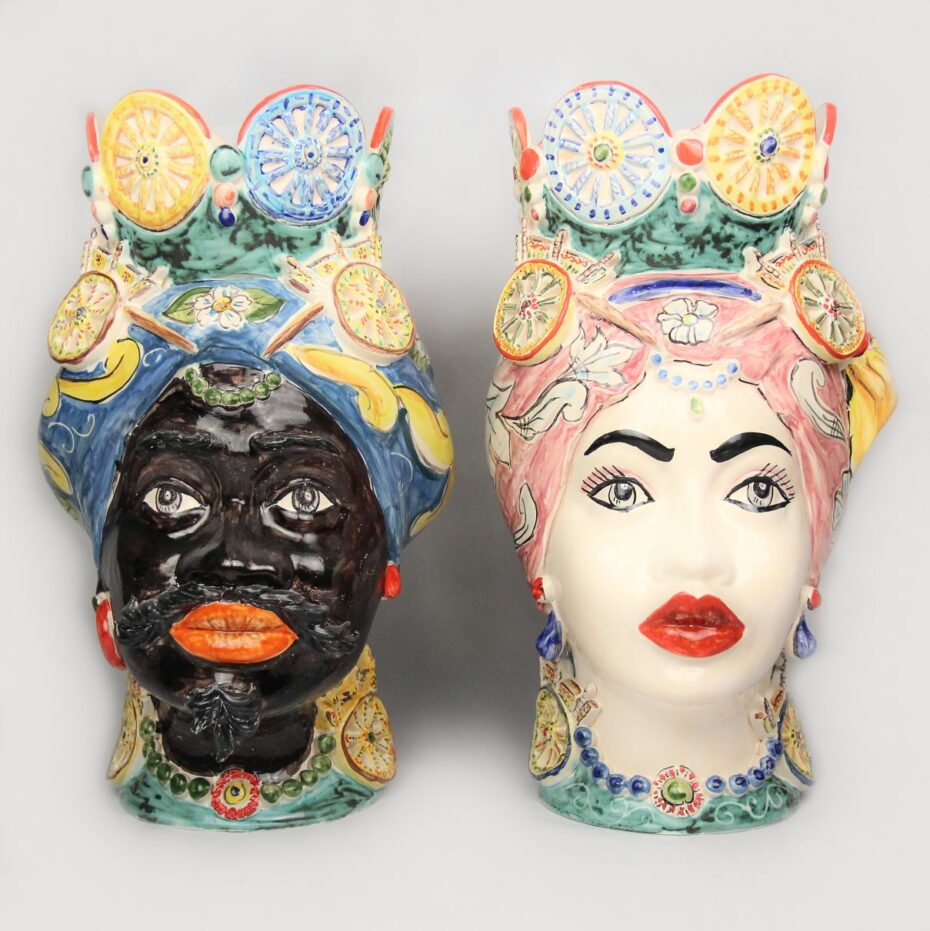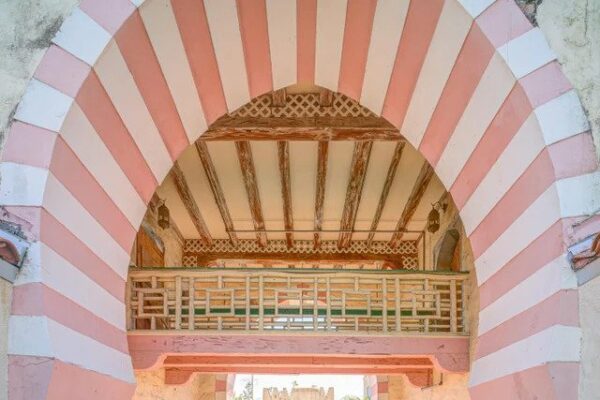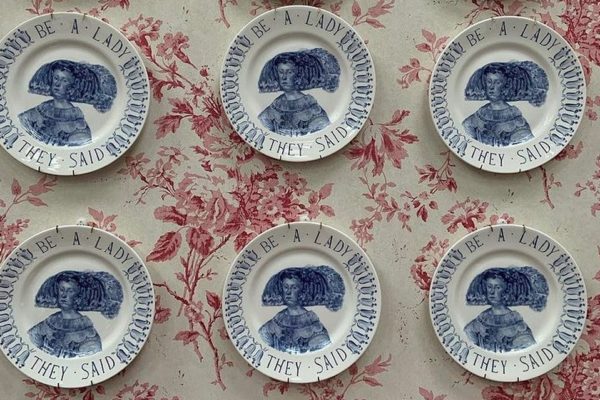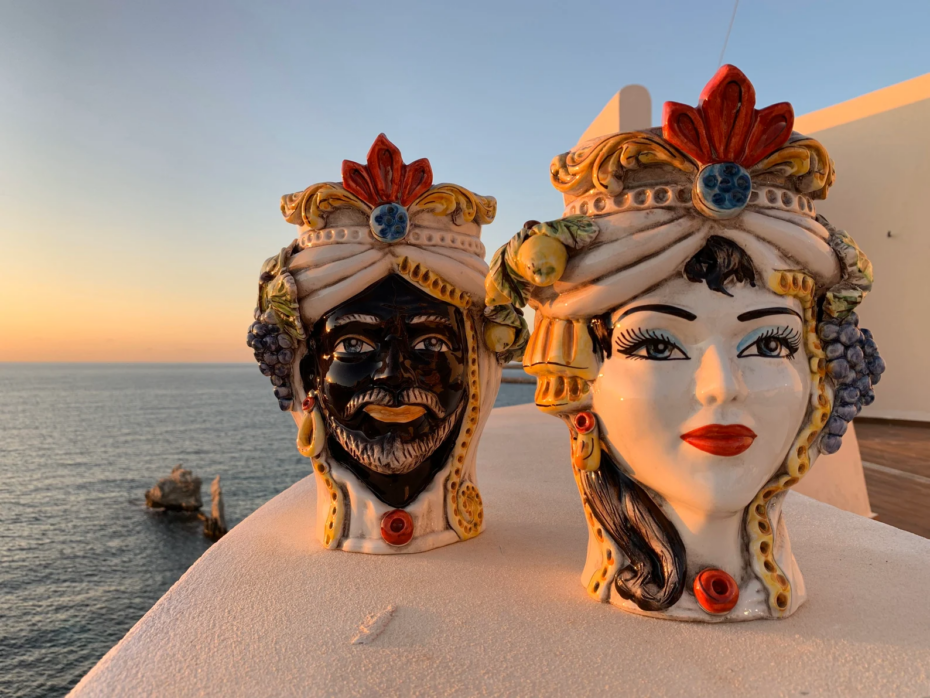
Anyone fortunate enough to visit Sicily, could not fail to notice the beguiling ceramic Moor heads, brimming with foliage, adorning gardens and balconies all over the island. Sicily is famous for its ceramics, designed in classical maiolica, but what may be lesser known, is that it was the Arabs who introduced this craft to the island. The Moor head pots, cups or jars, come in pairs depicting the heads of a man and a woman, usually with North African (Moorish) features and, more rarely, Black couples. Seemingly incongruous with modern Sicily, an exploration into the romantic story at the root of these artefacts, sheds light on the vibrant history of the island and the people who have moulded it.
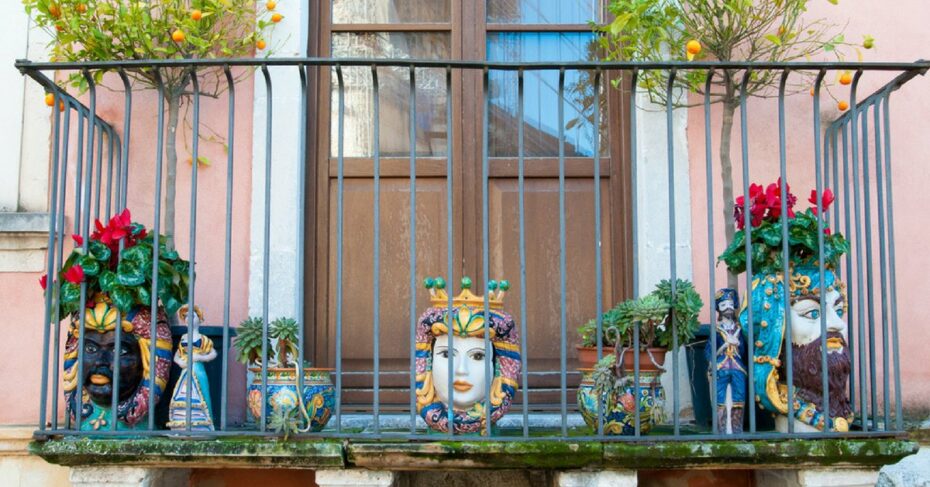
Behind the visage, so to speak, is a passionate folk story from Palermo, of love and jealousy, steeped in mythology and Sicilian history. Integral to the place and time of its origin, it tells like this; Once upon a time, in the ninth century to be precise, Sicily was conquered by Muslim Arabs, who had migrated from, what is now, Tunisia. Sicily was now an Arab emirate, and Palermo its capital. A Saracen merchant from North Africa, who had come to trade in this city, fell deeply in love with a beautiful local girl and, his feelings reciprocated, they began an ardent affair. Anticipating fidelity and marriage, such was the bond of their love, the girl was devastated upon discovering that her lover had a wife and family waiting for him in Africa, to whom he intended to return. Such was his betrayal, the girl’s devotion twisted into malignant jealousy, and she violently murdered him by severing his head from his body while he slept. Vowing that he would never leave her, she kept his head close, using it as a vessel in which to grow the most abundant basil plants. Her neighbours, impressed by the health and fertility of the plants but heedless of the her pot’s origin, soon began to craft their own pots, in the image of the Saracen’s head, in an attempt to replicate the girl’s horticultural success, and a trend was born.
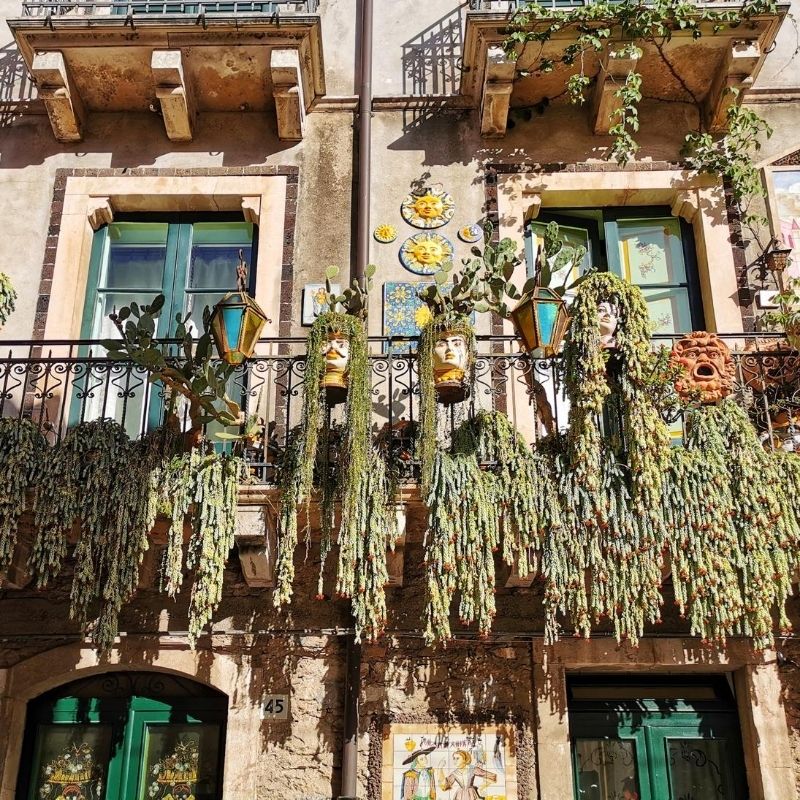
If this story sounds familiar, it could be that you have heard one of the many versions that have appeared throughout history and across the globe. It has been likened to the Ancient Greek story of Persephone, a fair maiden, who was condemned to spend half of each year in the underworld. The Sicilian version is called Mata and Grifone, in which a pious daughter from Messina falls for the general of an invading army who converts to Catholicism in order to rule with his beloved. The most famous interpretation, however, was that of the Italian writer Boccaccio, during the Renaissance, in his short stories of The Decameron; again situated in Messina, the noble orphan Lisbetta (or Isabelle) is jealously guarded by her three brothers. On learning of her love for Lorenzo, one of their employees, the brothers murder the boy and bury his body. His ghost informs Lisbetta of his fate, at which she, heartbroken, exhumes his body, burying his head inside a pot of basil which she lovingly tends and weeps upon, her tears watering the plant within. This story was then immortalised in 1818 in the poem Isabella, or the Pot of Basil, by Keats which was later the inspiration for the Victorian Pre-Raphaelite paintings, of almost the same name, by William Holman Hunt, Millais and John Waterhouse.
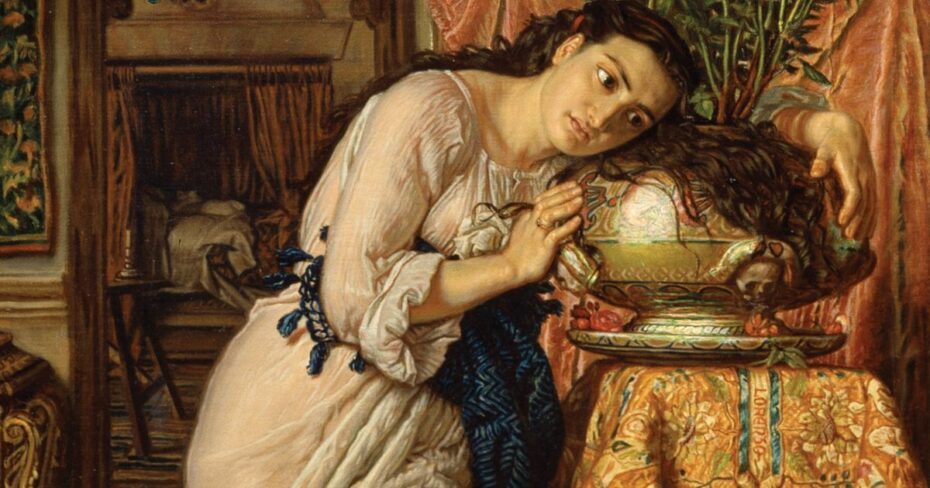

Is then, the story of the Moor pots the fruit of a heady (excuse the pun) combination of legend and Sicilian history? If the Messinese story was indeed adapted from the Greek Persephone, this would make perfect sense, as the island was colonised by the Ancient Greeks in the eighth century BC. It was also, during the Golden Age of Islam (between the seventh and thirteenth centuries of the common era), that the works of the Greek philosophers were translated by Muslim Arabs who studied them, such was their familiarity with Greek texts and culture.
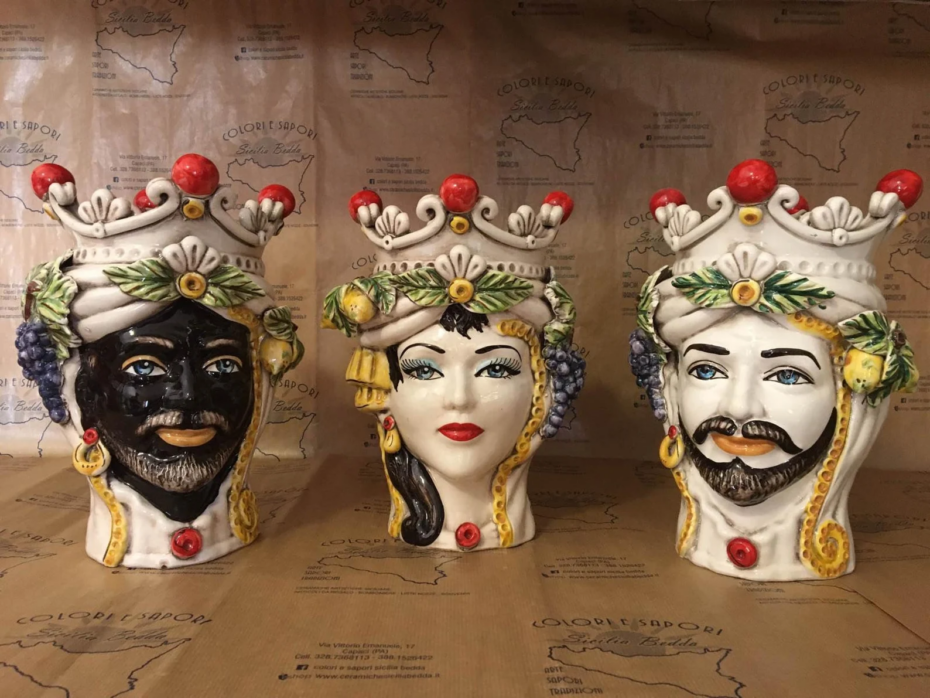
Why is it also, that the pots appear to be so diverse, while all falling into the label of Moor? Some are fair with blue or grey eyes whereas others are black or brown. According to Wikipedia, the word Moor was first coined by Christian Europeans to describe the Muslim inhabitants of Sicily and Malta during the Middle Ages. This is supported by Alessandra Di Maio, a professor of English and African Studies at the University of Palermo, who has written about the Moor heads; “The term [Moor] did not imply a single culturally, ethnically or racially bounded identity. It referred to dark-skinned people as well as to white people. Although habitually used as a synonym for Muslim” (Those are the lasers that were their eyes, Alessadra Di Maio, 2019).
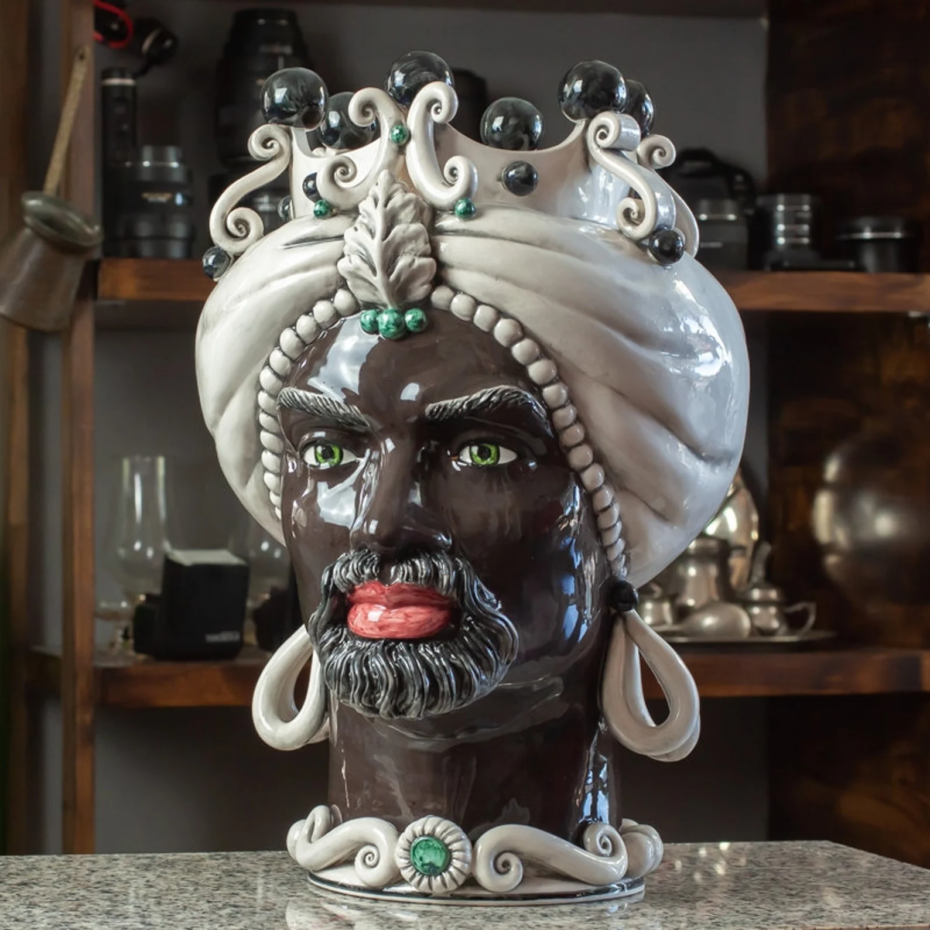
What cannot be avoided however, is that the term Moor has also been used throughout history as a derogatory expression among non-Muslim civilisations, and this begs the question of whether the term, or the pots themselves, are acceptable, during a time when statues of slave traders and artefacts, such as the Ecuadorian shrunken heads in the Pitt Rivers Museum in Oxford, are being removed from public display amid conversations regarding their appropriateness in a modern, and hopefully fairer, more enlightened, world. Well, the Muslims brought irrigation and cultivation, algebra and culinary delights, sumptious architecture and ceramics to Sicily. At the time from whence the Moor heads story surfaced, the Moors were rulers, conquerors, and to quote Di Maio from the same essay again, they were “not the colonial subjects, but the colonizers. They were the sovereigns, as the unfailing crown on the decorative heads makes clear.”
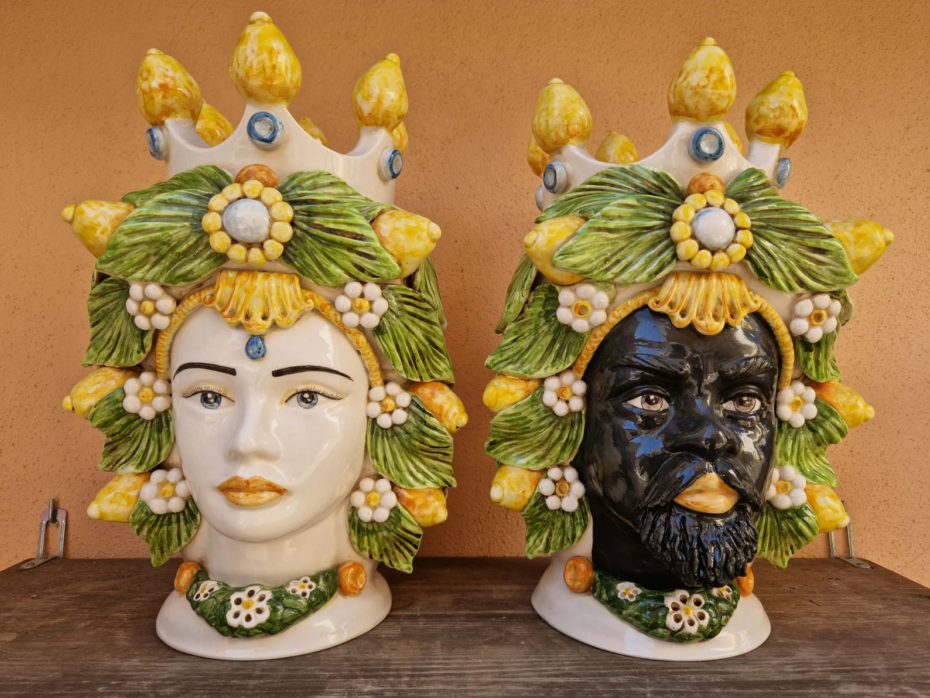
Outdated and not just in the kitsch sense? Or a celebration of a golden era in Sicilian history? We’ll leave it to you to decide – in the meantime, Etsy is probably the best way to window shop the Moorish Sicilian ceramics without flying to Italy.
